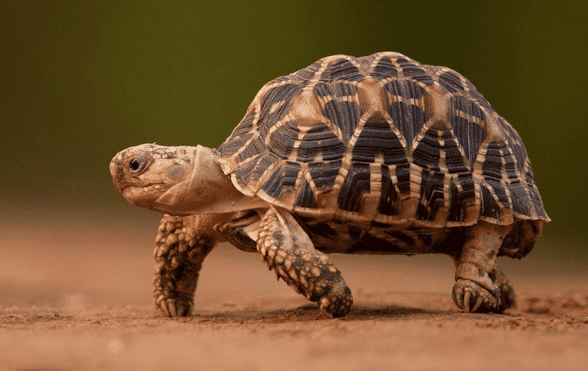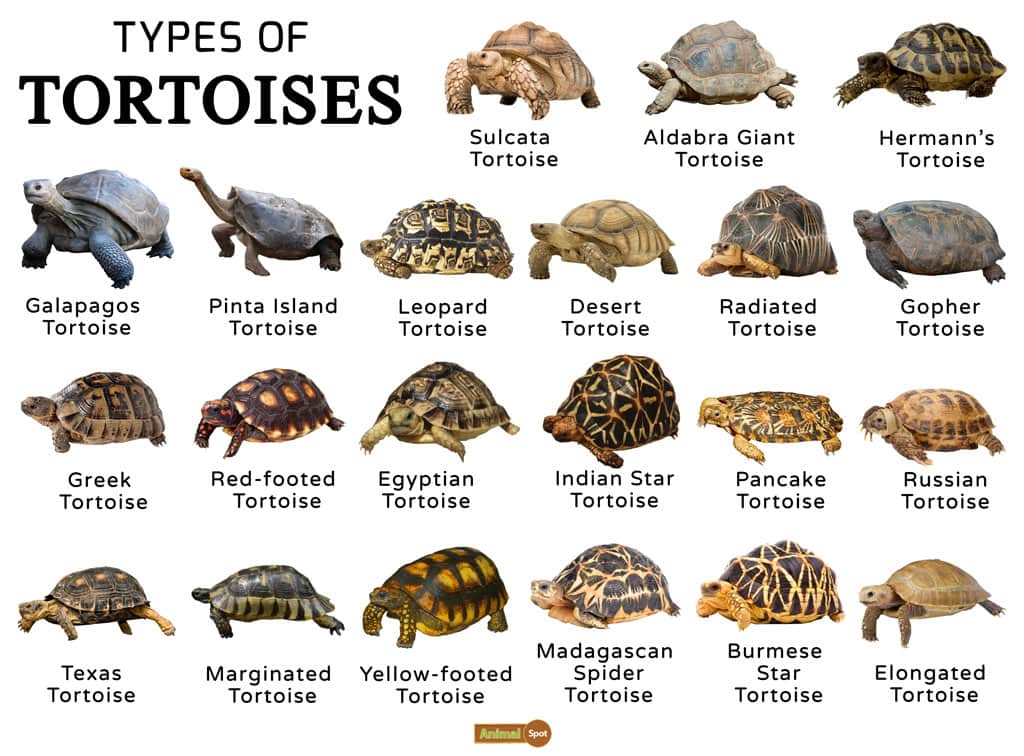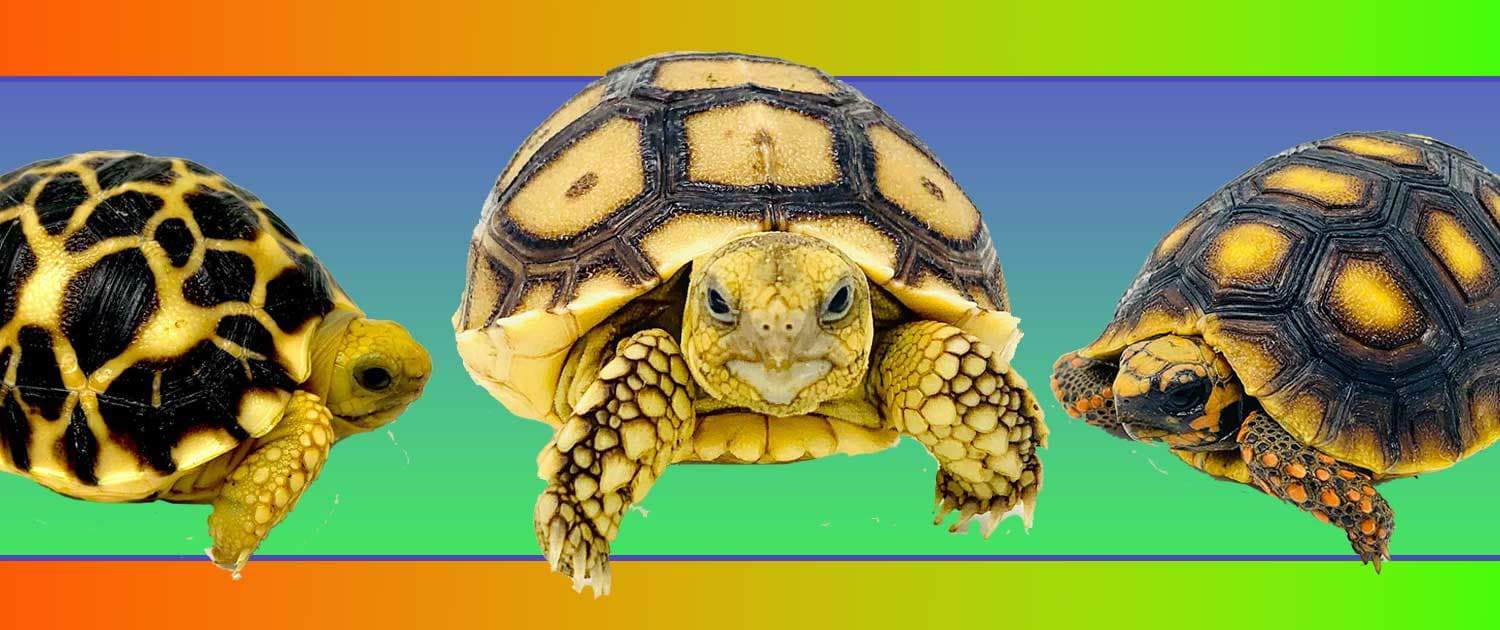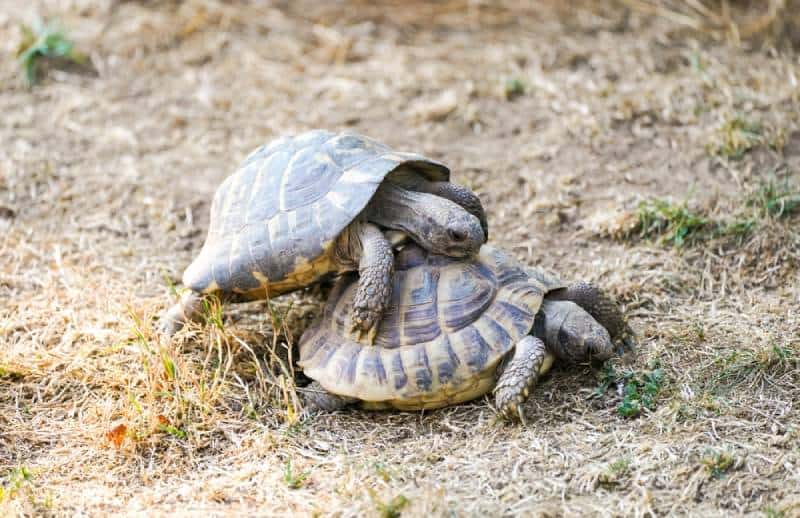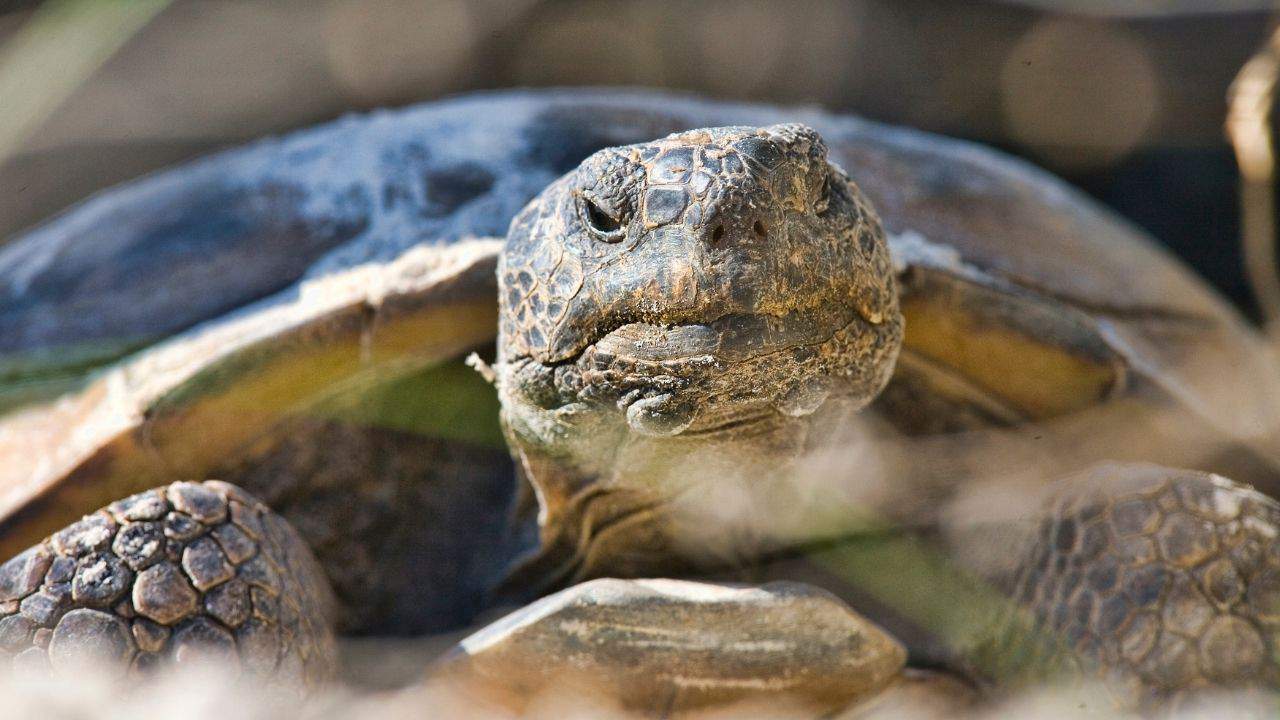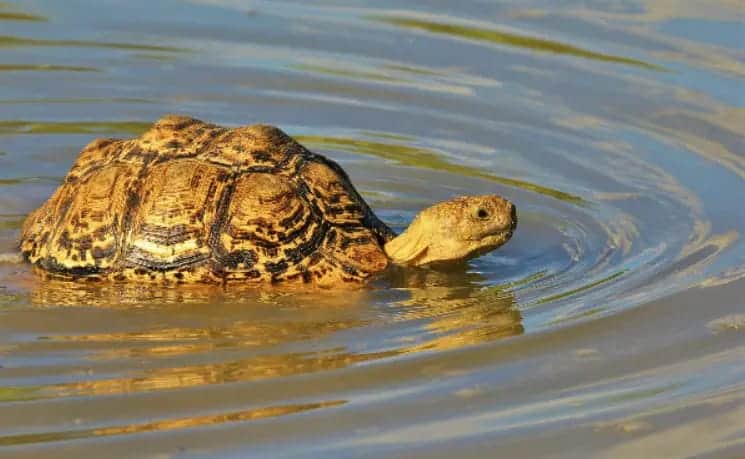From Desert Dwellers to Aquatic Adventurers: The Fascinating World of Tortoise Species
Tortoises are fascinating creatures that have been around for millions of years. They are reptiles that belong to the family Testudinidae and are known for their unique physical characteristics, including their hard shells and slow movements.
Tortoises play an important role in the ecosystem as they help maintain the balance of plant populations by grazing on vegetation and dispersing seeds.
The Evolution of Tortoises
Tortoises have a long evolutionary history that dates back to the time of dinosaurs. They are believed to have evolved from a common ancestor with turtles and have developed unique characteristics over time.
One of the most distinctive features of tortoises is their shell, which is made up of two parts: the carapace (the upper part) and the plastron (the lower part). This shell provides protection from predators and also helps regulate body temperature.
There are many different types of tortoises, each adapted to its specific environment. For example, desert tortoises have evolved to survive in arid regions by conserving water and digging burrows to escape the heat. On the other hand, aquatic tortoises have adapted to life in water with webbed feet and streamlined shells that allow them to swim efficiently.
Here’s a list of common tortoises kept as pets:
- Russian Tortoise (Agrionemys horsfieldii):
- Small and hardy, they’re popular due to their manageable size and ease of care.
- Greek Tortoise (Testudo graeca):
- Another small tortoise species, Greek tortoises are known for their friendly demeanor and attractive shell patterns.
- Hermann’s Tortoise (Testudo hermanni):
- Similar in size to Greek tortoises, Hermann’s tortoises are favored for their docile nature and vibrant colors.
- Marginated Tortoise (Testudo marginata):
- Slightly larger than Greek and Hermann’s tortoises, marginated tortoises are appreciated for their unique shell patterns and active behavior.
- Red-footed Tortoise (Chelonoidis carbonaria):
- Native to South America, red-footed tortoises are known for their colorful shell markings and sociable personalities.
- Leopard Tortoise (Stigmochelys pardalis):
- Named for their striking leopard-like spots, leopard tortoises are larger species that require spacious enclosures.
- African Spurred Tortoise (Centrochelys sulcata):
- One of the largest tortoise species, African spurred tortoises are popular pets but require ample space and proper care.
- Sulcata Tortoise (Centrochelys sulcata):
- Similar in size to African spurred tortoises, Sulcata tortoises are beloved for their friendly personalities and longevity.
These tortoises are commonly kept as pets due to their manageable size, availability, and suitability for captive conditions.
Physical Characteristics of Tortoises
Tortoises have a number of physical features that help them survive in their environments. Their shells are made up of bony plates covered by a layer of keratin, which gives them their hard and protective exterior. The shape and size of the shell can vary depending on the species, with some tortoises having domed shells for protection and others having flatter shells for easier movement.
Tortoises also have strong limbs with claws that enable them to dig burrows and climb over obstacles. Their heads are usually small and triangular in shape, with a beak-like mouth for eating vegetation. Tortoises have a keen sense of smell and can use their long necks to reach food that is out of reach.
Habitat and Distribution of Tortoise Species
Tortoises can be found in a variety of habitats around the world, including deserts, grasslands, forests, and even islands. They are most commonly found in warm and tropical regions, but some species have adapted to colder climates as well. Tortoises are distributed across different continents, with the highest diversity found in Africa and South America.
The specific habitat requirements of tortoises vary depending on the species. For example, desert tortoises prefer arid regions with sandy soil where they can dig burrows to escape the heat. On the other hand, forest tortoises thrive in areas with dense vegetation and moist soil. Some tortoises are also adapted to living in coastal areas or on islands.
Feeding Habits of Tortoises
Tortoises are herbivores, meaning they primarily eat plant material. Their diet consists mainly of grasses, leaves, flowers, and fruits. Some tortoise species have specialized diets and feed on specific types of plants. For example, the Galapagos tortoise feeds on cacti, while the Aldabra giant tortoise eats grasses and shrubs.
Tortoises have adapted to their diets in several ways. They have strong jaws and beak-like mouths that allow them to bite and chew tough vegetation. Their digestive systems are also designed to process plant material efficiently. Tortoises have a slow metabolism, which helps them extract nutrients from their food and conserve energy.
Reproduction and Life Cycle of Tortoises
Tortoises reproduce sexually, with males and females coming together to mate. The mating process usually involves courtship displays and rituals, such as head bobbing and biting. After mating, the female tortoise will lay her eggs in a nest that she digs in the ground. The number of eggs can vary depending on the species, with some tortoises laying only a few eggs and others laying dozens.
The incubation period for tortoise eggs can be quite long, ranging from a few months to over a year. Once the eggs hatch, the baby tortoises are fully independent and must fend for themselves. They are vulnerable to predation and face many challenges in their early life, including finding food and avoiding predators.
Threats to Tortoise Populations
Tortoises face a number of threats that have led to declines in their populations. One of the biggest threats is habitat loss, as human activities such as deforestation and urbanization have destroyed or fragmented their habitats. This has resulted in loss of food sources and nesting sites for tortoises.
Another major threat to tortoises is poaching. Tortoises are often targeted for their meat, shells, and eggs, which are sold on the black market. This illegal trade has had devastating effects on tortoise populations, especially in regions where they are highly valued for their cultural or medicinal purposes.
Conservation Efforts for Tortoise Species
To protect tortoise populations, various conservation efforts are being made around the world. These efforts include establishing protected areas where tortoises can live undisturbed, implementing laws and regulations to prevent poaching and illegal trade, and raising awareness about the importance of conserving these species.
In addition, captive breeding programs have been successful in increasing the numbers of some endangered tortoise species. These programs involve breeding tortoises in captivity and then releasing them into the wild to boost wild populations. This approach has been particularly effective for species that are at high risk of extinction.
Unique Adaptations of Desert Tortoises
Desert tortoises have developed unique adaptations to survive in their harsh environments. One of the most important adaptations is their ability to conserve water. Desert tortoises can store water in their bladders, allowing them to go for long periods without drinking. They also have specialized kidneys that can extract water from their urine, further reducing water loss.
- Gopherus agassizii (Desert Tortoise):
- Native to the southwestern United States and northwestern Mexico, known for their ability to survive in harsh desert environments.
- Gopherus morafkai (Morafka’s Desert Tortoise):
- Found in the Sonoran and Mojave Deserts of the southwestern United States and northwestern Mexico, closely related to Gopherus agassizii.
- Gopherus flavomarginatus (Bolson Tortoise):
- Found in the Chihuahuan Desert of northern Mexico, known for their yellowish margins on their carapace.
- Testudo kleinmanni (Egyptian Tortoise):
- Native to the deserts of North Africa, including Egypt and Libya, critically endangered due to habitat loss and poaching.
- Geochelone sulcata (African Spurred Tortoise):
- Found in the Sahara Desert of northern Africa, known for their large size and distinctive spurs on their legs.
- Gopherus berlandieri (Texas Tortoise):
- Found in the deserts and scrublands of the southwestern United States and northern Mexico, characterized by their domed shells.
- Gopherus flavomarginatus (Bolson Tortoise):
- Found in the deserts of Mexico, characterized by their yellowish shell margins and preference for arid habitats.
Another adaptation of desert tortoises is their ability to dig burrows. These burrows provide shelter from extreme temperatures and predators. Desert tortoises are excellent diggers and can create complex burrow systems that extend several feet underground.
Aquatic Tortoises: Adaptations for Life in Water
Aquatic tortoises, also known as terrapins, have adapted to life in water. They have webbed feet and streamlined shells that allow them to swim efficiently. Aquatic tortoises are excellent swimmers and can move quickly through the water using their powerful limbs.
- Red-eared Slider (Trachemys scripta elegans):
- Native to North America, often kept as pets, known for their distinctive red stripes behind the eyes.
- Painted Turtle (Chrysemys picta):
- Found in North America, recognized for their vibrant shell patterns resembling painted artwork.
- Map Turtle (Graptemys spp.):
- Several species exist, named for the map-like markings on their carapace, found primarily in North America.
- Musk Turtle (Sternotherus spp.):
- Also known as stinkpots, these small turtles are found in North America and emit a musky odor when threatened.
- Common Snapping Turtle (Chelydra serpentina):
- Known for their aggressive nature, widespread in North America, and can grow to be quite large.
- Florida Softshell Turtle (Apalone ferox):
- Native to the southeastern United States, known for their soft, leathery shell and long snorkel-like nose.
- Cooter Turtles (Pseudemys spp.):
- Various species found in North and Central America, known for their large size and preference for freshwater habitats.
- Side-necked Turtles (Podocnemididae family):
- Found in South America, Africa, and Australia, they retract their head sideways rather than straight back.
Some aquatic tortoises have also developed specialized adaptations for feeding underwater. For example, the matamata turtle has a long neck and a wide mouth that it uses to catch fish and other prey. The soft-shell turtle has a flexible shell that allows it to move more easily in the water.
Endangered Tortoise Species and Conservation Efforts
Several tortoise species are currently endangered or critically endangered, meaning they are at high risk of extinction. These include the radiated tortoise, the ploughshare tortoise, and the Galapagos giant tortoise. Conservation efforts are being made to protect these species, including captive breeding programs, habitat restoration, and anti-poaching initiatives.
Here’s a list of some endangered tortoise species:
- Radiated Tortoise (Astrochelys radiata):
- Native to Madagascar, this species is critically endangered due to habitat loss, poaching for the pet trade, and collection for traditional medicine.
- Ploughshare Tortoise (Astrochelys yniphora):
- Also native to Madagascar, the ploughshare tortoise is critically endangered due to habitat destruction and illegal trafficking.
- Angonoka Tortoise (Astrochelys yniphora):
- Another critically endangered species from Madagascar, the Angonoka tortoise faces threats from habitat loss and illegal trade.
- Bolson Tortoise (Gopherus flavomarginatus):
- Found in the Chihuahuan Desert of Mexico, the Bolson tortoise is critically endangered due to habitat degradation and collection for the pet trade.
- Egyptian Tortoise (Testudo kleinmanni):
- Native to the deserts of North Africa, including Egypt and Libya, this species is critically endangered due to habitat loss and collection for the pet trade.
- McCord’s Box Turtle (Terrapene mccordi):
- Endemic to the Indonesian island of Sumatra, this species is critically endangered due to habitat destruction and collection for the pet trade.
- Flat-tailed Tortoise (Pyxis planicauda):
- Native to Madagascar, the flat-tailed tortoise is endangered due to habitat loss and degradation.
- Madagascar Spider Tortoise (Pyxis arachnoides):
- Also native to Madagascar, this species is endangered due to habitat loss and collection for the pet trade.
It is crucial that we continue to support these conservation efforts to ensure the survival of tortoise species. Tortoises play an important role in maintaining the balance of ecosystems and their loss would have far-reaching consequences. By raising awareness about the importance of conserving these species and supporting organizations working on the ground, we can make a difference in protecting tortoises for future generations.
In conclusion, tortoises are remarkable creatures that have evolved over millions of years to survive in a variety of environments. They play a vital role in the ecosystem and face numerous threats to their survival. It is up to us to take action and support conservation efforts to protect these incredible species. By doing so, we can ensure that tortoises continue to thrive and contribute to the biodiversity of our planet.
